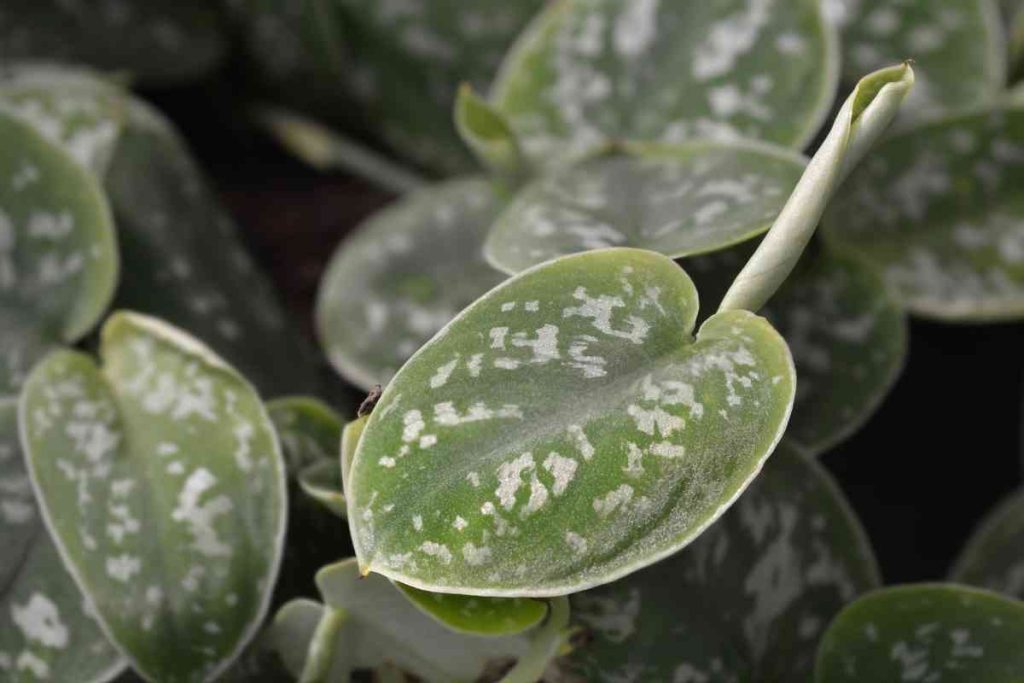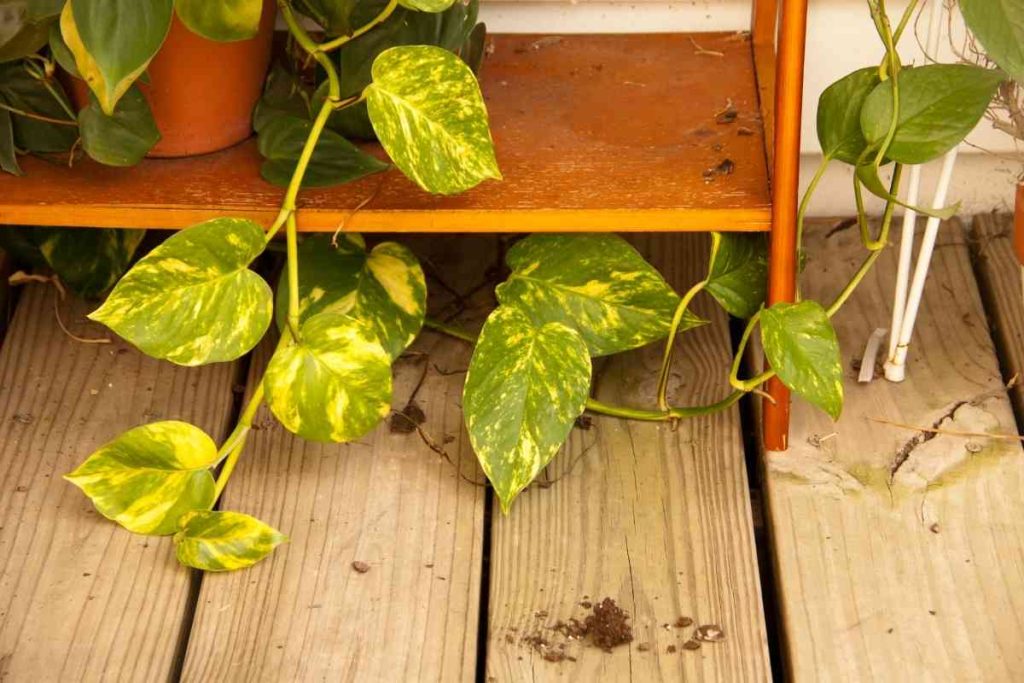Pothos is increasingly becoming a popular houseplant among gardeners and plant lovers in recent times.
It shouldn’t be too much of a surprise because it comes in different varieties, ranging from green-leaved to variegated types. Silver and Satin Pothos are just two of its amazing varieties.
Most people sometimes confuse satin pothos with being silver pothos. You won’t blame them, though, as they are almost identical.
The main difference between the silver pothos vs satin pothos is their leaves. Silvery Ann Pothos has more variegated leaves than Silver Satin Pothos. The variegation of Silvery Ann is more chaotic, while Silver Satin has more regular variegation.
We’ll come back to the details on that later!
Table of Contents
What is Silver Pothos?
The silver pothos is a variety that has its natural habitat around Southeast Asia, the Pacific Islands, Queensland, and New Guinea regions. Every member of the silver pothos family is all under the Scindapsus pictus variety and has the same care factors.
It is botanically called Scindapsus pictus because of its natural habit of climbing rocks and trees. Different kinds of silver philodendrons possess different stages of silvery-white spots, while several of the varieties exhibit completely white leaves.
These spots develop as a result of air pockets that grow below the leaf's surface. It leads to a filtered level of sunlight, thereby making the plant develop its unique silver and green foliage. The silver pothos climb rocks and trees in its tropical jungle, displaying new habits.
This new habit ranges from allowing its leaves to prostrate against the structure to producing bigger leaves higher up the plant.
Meanwhile, the silver pothos is mostly cultivated as an indoor plant in some countries like the United States. It thrives inside a hanging basket, where its vines can be a waterfall of silver and green leaves.
What is Satin Pothos?

Also known as Silver Satin Pothos, the satin pothos’ natural habitat can be traced to the tropical rainforests of Asia.
It features heart-shaped leaves, which is why it is sometimes classified as one of the heart-shaped philodendron varieties. It has a long stem that can grow up to 10 feet (3m) in length.
If you cultivate them as houseplants in pots, the satin pothos tends to produce stems that trail up to 3 feet (0.9m) long.
Constant pruning can make your satin pothos the best-potted houseplant, as it will help them to produce bushy foliage. Also, put them in a hanging basket in a bright area to give you the best result.
Satin pothos is sometimes scientifically called pictus, which means painted because it produces variegated silver dots and blotches on the matte green foliage.
Have we mentioned that they are also climbers? Indeed, it is much like its sister plant (the silver pothos) and some other vining philodendron varieties.
Silver Pothos Vs Satin Pothos
| Silver Pothos | Satin Pothos | |
| Scientifically called Scindapsus pictus ‘Silvery Ann.’ | Scientifically called Scindapsus pictus ‘Silver Satin.’ | |
| The temperature level is 65 to 75°F (18 to 23°C) | The temperature level is 65 to 75°F (18 to 23°C) | |
| Growth up to 6ft tall and 3ft wide | Growth up to 10ft tall and 4ft wide | |
| It is a vining plant | It is also a vining plant | |
| Medium growth rate | Rapid growth rate | |
| Bright but indirect sunlight | Bright but indirect sunlight | |
| Needs watering every once in 10 to 14 days | Needs watering every once in 7 to 10 days. | |
Differences Between Silvery Ann Pothos and Silver Satin Pothos

Like so many other houseplant varieties, the silver pothos and satin pothos bear a striking resemblance that you could confuse one for the other. However, there remain some notable differences between them; one of the more obvious of them is in their leaves.
Silver pothos possesses a rather larger chlorophyll-free tissue part than its opposite plant. Its leaves pattern is mostly confusing, as sometimes it can feature big gray-white color islands at the center, and sometimes, completely white.
However, the main leaf part is often green with one white spot. On the other hand, satin pothos possesses a steadier pattern and less white tissue. The leaf center is often greenish, while the middle of the two leaf lobes is primarily white or gray-white.
The margin of the leaf is predominantly green, but it can be variegated. And its leaves cannot be fully white.
Talking about the leaf sizes, that of the silver pothos are often smaller than that of the satin pothos.
Under normal indoor conditions, the former has a leaf size of 4 to 5 inches long and 2 to 3 inches wide, while the latter is bigger with leaf sizes of over 6 inches long and over 4 inches wide. But, outdoors, both could outgrow that size.
Another notable difference is the growth habit and conditions; the silver pothos generates less energy, causing the plant to have slower growth. At the mature stage, it couldn’t grow more than 6ft tall and 3ft wide. In contrast, the satin pothos, with larger leaves, grow more speedily and grow up to 10ft tall and 4ft wide.
As long as their watering is concerned, both silver and stain pothos need adequate watering.
However, there is a slight difference with the watering routine. For instance, the former should be done once every 10 to 14 days, while the latter should be done once every 7 to 10 days.
Is Silver Pothos Similar to Satin Pothos?
As we mentioned earlier, both plants bear striking similarities, which might get you into confusing one with the other. One important thing to note is that they are both from Scindapsus pictus, and their natural origin is in tropical south-eastern Asia.
Also, both plants are vining, and when they climb, they tend to rest on the bark of bigger trees or plants and face upwards when growing.
They both also need bright and indirect sunlight to thrive, and when grown indoors, it is best when placed towards the south-facing part of the window.
The silver pothos and satin pothos require good quality soil to grow well, like, say, a potting mix, but it should be pet and disease-free.
Their growing conditions are similar, as both can thrive in temperatures that range from 60 to 70 degrees Fahrenheit and humidity levels of 65 to 75%.




